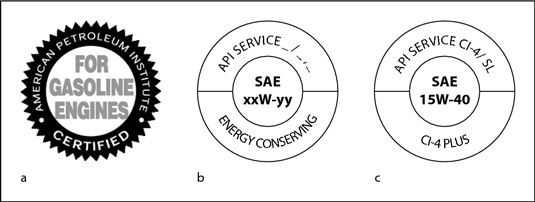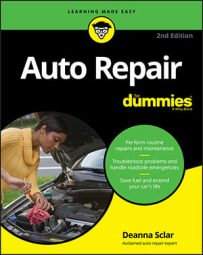The various types of motor oil on the market are designed for different purposes. To choose the proper type of oil for your vehicle, you need to understand the significance of the oil additives, viscosity ratings, and classification codes.
-
Oil additives: To help the oil keep your engine cool, clean, and corrosion-free, refiners blend in various additives, which can account for as much as 25 percent of the cost of the oil.
-
Viscosity ratings: Oil is rated and identified by its viscosity, which determines its ability to flow.
Two types of oil are on the market: single-viscosity oil and multi-viscosity oil. Almost every vehicle is designed to run on multi-viscosity oil. The lower the number, the thinner the oil and the more easily it flows. In 10W-40 oil, for example, the two numbers mean that it’s a multi-viscosity oil. The 10W is an index that refers to how the oil flows at low temperatures (in winter); 40 refers to how it flows at high temperatures.
To find out which viscosity to choose for your vehicle, look in your owner’s manual for an oil viscosity chart.
-
Oil classification codes: The starburst symbol on an oil container label means that the oil meets the current engine protection standard and fuel economy requirements of the International Lubricant Standardization and Approval Committee (ILSAC), a joint effort of U.S. and Japanese automobile manufacturers.
 (a) API starburst symbol, (b) API donut symbol for gasoline engine oil, and (c) API donut symbol for diesel engine oil.
(a) API starburst symbol, (b) API donut symbol for gasoline engine oil, and (c) API donut symbol for diesel engine oil. -
Synthetic oil: Some claim that synthetic oils allow longer intervals between oil changes, result in less wear on engine parts, and operate at higher engine temperatures. The longer interval claim has yet to be proven.
-
What kind of oil have you been using? If your vehicle is running well, there’s no reason to switch brands.
-
What kind of oil does your owner’s manual recommend? If your vehicle is still under warranty, using something other than the recommended oil may invalidate the warranty on a new vehicle.
-
Do you live in a very cold or very hot climate? Is it mountainous? Are there sharp changes in temperature where you live? Multi-weight oils cover a range of temperatures. The lower the number before the “W,” the better the oil works in cold weather.
-
How old is your vehicle? If you have an old vehicle that has been running on single-weight oil for most of its life, it has built up quite a bit of sludge because some single-weight oils don’t have detergent in them.
If you suddenly switch to multi-viscosity oil, the detergent in it will free all the gook in your engine, and the gook will really foul things up.
-
How worn is your vehicle’s engine? If your vehicle has logged a great many miles over several years and has been running on 30- or 40-single-weight oil, multi-weight oil isn’t consistently thick enough to lubricate the worn engine parts that have become smaller while wearing down, leaving wider spaces between them. To keep the oil thick enough to fill these gaps, switch to heavier single-weight oil as your vehicle gets older and starts to run more roughly or burn up oil more quickly. If you’ve been running on 30-weight oil, switch to 40-weight at least during the summer, when oil tends to thin out.

